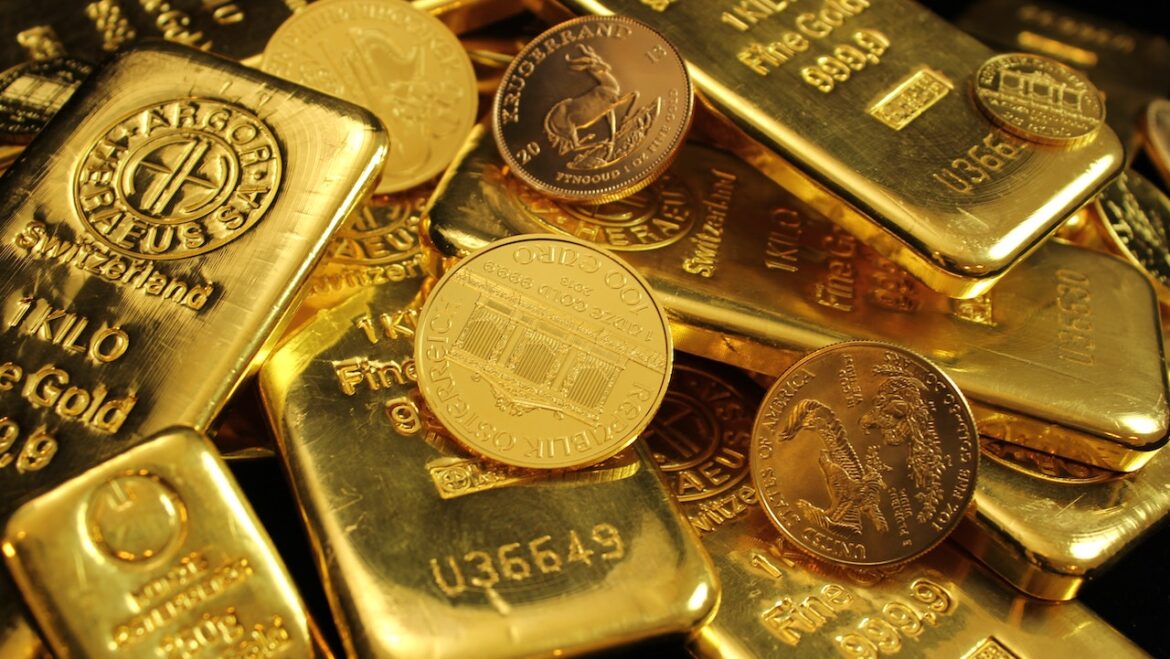Gold has all the potential to go unprecedentedly high. But silver will be gold on
Site:
Precious metals news
The G7's aim to reach net-zero emissions by 2050 will boost demand for silver, used in green energy, electronics, and defense. Yet, supply is under strain due to rising mining costs, environmental regulations, and mining bans in major producers like Mexico. Meanwhile, silver is gaining popularity as a hedge against systemic risk, inflation, and de-dollarization, as nations push back against U.S. dollar hegemony. These factors, combined with silver's role in emergent technologies like solid-state batteries, signal a bright future for silver despite challenges faced by miners, thereby driving up silver prices. The ambitious “net zero” agenda means that strategic metals are the new oil.
Aug 1, 2023 - 12:41:14 PDT
The blending of saving and investing due to fiat currency inflation has pushed people towards riskier assets like stocks and bonds. However, these traditional wealth stores are losing favor, particularly Treasuries, which had their worst year in 2022. Instead, gold is emerging as a preferred store-of-value, fueled by demand from central banks, especially in China and Russia. The growing U.S. debt, impending default, currency debasement, and potential hyperinflation underscore this trend. A major shift in global finance is underway, with gold likely to replace Treasuries as the top store-of-value asset.
Despite the recent hike, the Federal Reserve's approach to managing the spiralling inflation crisis appears lackluster and ineffective. In a worrying announcement, Fed Chair Jay Powell projected that inflation won't hit the targeted 2% until 2025, implying years of potential economic hardship. The vague 'meeting-by-meeting' strategy suggested by Powell offers little reassurance, with further rate hikes potentially as early as September. Powell's reference to the "Volcker Mistake" doesn't inspire confidence either, hinting at more potential rate hikes under the guise of avoiding past errors.
Aug 1, 2023 - 12:04:46 PDT
Under President Jimmy Carter, the US suffered economic stagnation and high inflation. Now, under Biden's economic policies, or "Bidenomics", the situation seems to be even worse. Current real median weekly earnings for men have dropped below 1979 levels, which were during Carter's term. The growth of these earnings was at a low of -4.45% in April 2023. The trend illustrates the negative impact of these policies, suggesting that "Bidenomics" is failing to deliver on economic growth for men.
Aug 1, 2023 - 11:46:34 PDT
Limiting the amount of information you share online is an effective way to counter data mining. This might initially seem daunting, but it can be as simple as compartmentalizing your online accounts. For instance, rather than having all your online accounts linked to a single Gmail account, which allows Google to monitor all your activities online and potentially make your data vulnerable to government subpoenas or hackers, you could use services like Proton Mail. These offer email aliases that enable you to separate your online activities, thus preventing a central point of vulnerability. Furthermore, certain precautions can shield your IP address and browser activity.
Are you aware of the looming threat that Central Bank Digital Currencies (CBDCs) pose to your financial freedom?
Aug 1, 2023 - 08:35:54 PDT
Major global banks, such as Barclays and JPMorgan Chase, are facing accusations of closing customer accounts due to political or religious affiliations, raising concerns about possible banking discrimination. Instances have occurred where customer accounts are being screened and rejected based on 'reputational risks', including political leanings and involvement in certain industries. Critics, including stakeholders and state officials, are arguing against the alleged politicization of banking practices and have raised concerns that this could evolve into a more comprehensive social credit system.
The June JOLTS report indicates that job openings were nearly stagnant, decreasing by just 34K to 9.582MM, marking the lowest level since April 2021. This drop in job openings was less than the expected consensus of 9.6 million. Additionally, the report showed a substantial drop in people quitting their jobs and a decline in the number of hires, suggesting a weakening labor market. These findings contradict the positive job market narrative presented by the Biden administration.
Global manufacturing PMIs across China, Turkey, Italy, France, Germany, the Eurozone, the UK, Canada, and Brazil have all dipped below 50, indicating contraction. Despite the US's positive economic data and the introduction of "Bidenomics," the US manufacturing sector has also faced a contraction, with July's PMI printing at 49.0. The ISM's Manufacturing survey showed the rate of employment slowing rapidly and new orders continuing to decrease. These conditions are a far cry from the thriving economy promised under 'Bidenomics'.
The higher education bubble, characterized by massive debt, profiteering, and mal-investment, mirrors the stock market bubble. It's driven by a misplaced confidence in future gains, fueled by recency bias and herd mentality. This results in perceived minimal risk and a euphoric rush to join the crowd. Such conditions can change quickly, though, leading to severe financial consequences, as seen in the South Seas Bubble. It all began promisingly, with early investors reaping rewards, but when the bubble burst, accumulated wealth vanished. The herd mentality and recency bias, also seen in the internet growth predictions of 1999-2000, are potent drivers of confidence. However, when these bubbles burst, as they invariably do, the downfall is precipitous.
Hedge funds are scrambling as they face escalating risks amidst unpredictable markets in 2023. In response, these funds are rapidly cutting both bullish and bearish equity positions, in a frenzy akin to the 2021 retail-fomented short squeeze. The unexpected and relentless equity rally is causing broad capitulation, leaving funds floundering. Additionally, despite market optimism, looming uncertainties such as potential bond defaults and a weak market seasonality forecast for August are breeding an undercurrent of caution. Amid this chaos, long-short funds have posted nine consecutive days of negative returns, making the situation increasingly untenable.
China's rising deflationary pressures spell disaster, threatening to drag the nation and potentially the global economy into a devastating slump. Plummeting prices erode corporate profits, suppress consumer spending, and risk increasing unemployment rates. As Frederic Neumann, chief Asia economist at HSBC in Hong Kong, warns, "The market is underestimating the deflationary impact on the global economy."
There's a big problem that pretty much everybody is just ignoring.In just two months since Congress reached a deal and suspended the debt ceiling for two years, the national debt has surged by a staggering $1.2 trillion.Within a week of the debt ceiling suspension, the national debt cracked $32 trillion and as of July 28, it stood at $32.66 trillion.
Aug 1, 2023 - 06:05:18 PDT
Sovereign debt defaults increased by 35% to $558 billion in 2022 as interest rates rose, hitting emerging markets and heavily indebted poor countries hardest, says a Bank of Canada and Bank of England report. Even though the number of countries in default reduced from 99 to 84, the amount of default debt expanded significantly, with the largest increases in poorer countries and emerging markets. This comes as global government debt remains high amid rising interest rates, and the IMF anticipates the global public debt will continue to increase over the medium-term.
Investment demand for physical gold was up by 20% in the second quarter compared to last year, continuing a trend we've seen over the last 12 months. This helped push overall gold demand up 7% year on year when including over-the-counter (OTC) sales and stock flows.
Aug 1, 2023 - 05:40:10 PDT
US national debt has spiked by $1.19 trillion to $32.66 trillion since the lifting of the debt ceiling. The Treasury Department increased borrowing plans to $1.01 trillion this quarter and an expected $852 billion in the next due to lower revenues and higher outlays. This flood of Treasury securities will need to attract investors with high enough yields, and an increase in longer-term securities issuance is expected soon.
Gold's value remains steady as investors evaluate the Federal Reserve's recent decisions and decreasing US consumer inflation. Gold's reputation as a risk hedge and alternative to the US dollar contributes to its 60% rise over five years, outperforming the dollar. The US's soaring public debt, predicted to reach $52 trillion by 2033, coupled with political resistance to spending cuts or tax hikes, may lead to a major debt crisis in the next decade. This could discourage foreign debt buyers, particularly non-allied nations like China, potentially leading them towards gold. Hence, it's likely gold prices will continue to excel in the upcoming decade.
Unusual changes in COMEX silver futures show a managed money trader taking a large short position. This trader must eventually buy back this short position, potentially positively influencing silver prices. Simultaneously, a new substantial silver long has emerged, hinting at a longer-term commitment to silver. Despite possible regulatory challenges, these developments could significantly impact the silver market and potentially lead to a surge in prices.
Eurozone inflation woes are escalating as the record-breaking surge in services sector prices persists, up 5.6% in July. Domestic price pressures, spurred by wage increases and robust profit margins, have taken center stage, overshadowing the significant decline in energy prices and tempering of food inflation. The stubbornly high "core" CPI at 5.5% underpins the growing problem. Despite the European Central Bank's attempts to mitigate this through asset reduction and policy rate hikes, they seem to be losing the battle against entrenched inflation, posing a substantial economic risk.
The US Treasury is preparing for a significant increase in longer-term security issuance in response to a worsening budget deficit and surging interest rates. The public borrowing requirements are escalating due to the Fed's rate hikes, which increase yields on government debt, thereby making it costlier. Concurrently, the Fed is reducing its Treasury holdings, which necessitates larger government sales to other buyers, potentially leading to more volatile auctions. An uptick in debt issuance doesn't immediately mean lower prices and higher yields but increases the potential for short-term volatility, especially given the banks' reduced market-making appetites. The combination of Fed rate hikes and inflation has spiked the cost of servicing US government debt by 25% in the fiscal year's first nine months. This rapid growth in public borrowing only underscores the seriousness of the country's financial situation.










